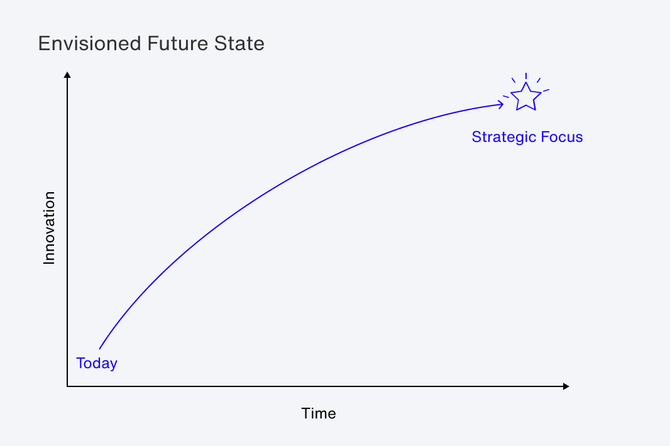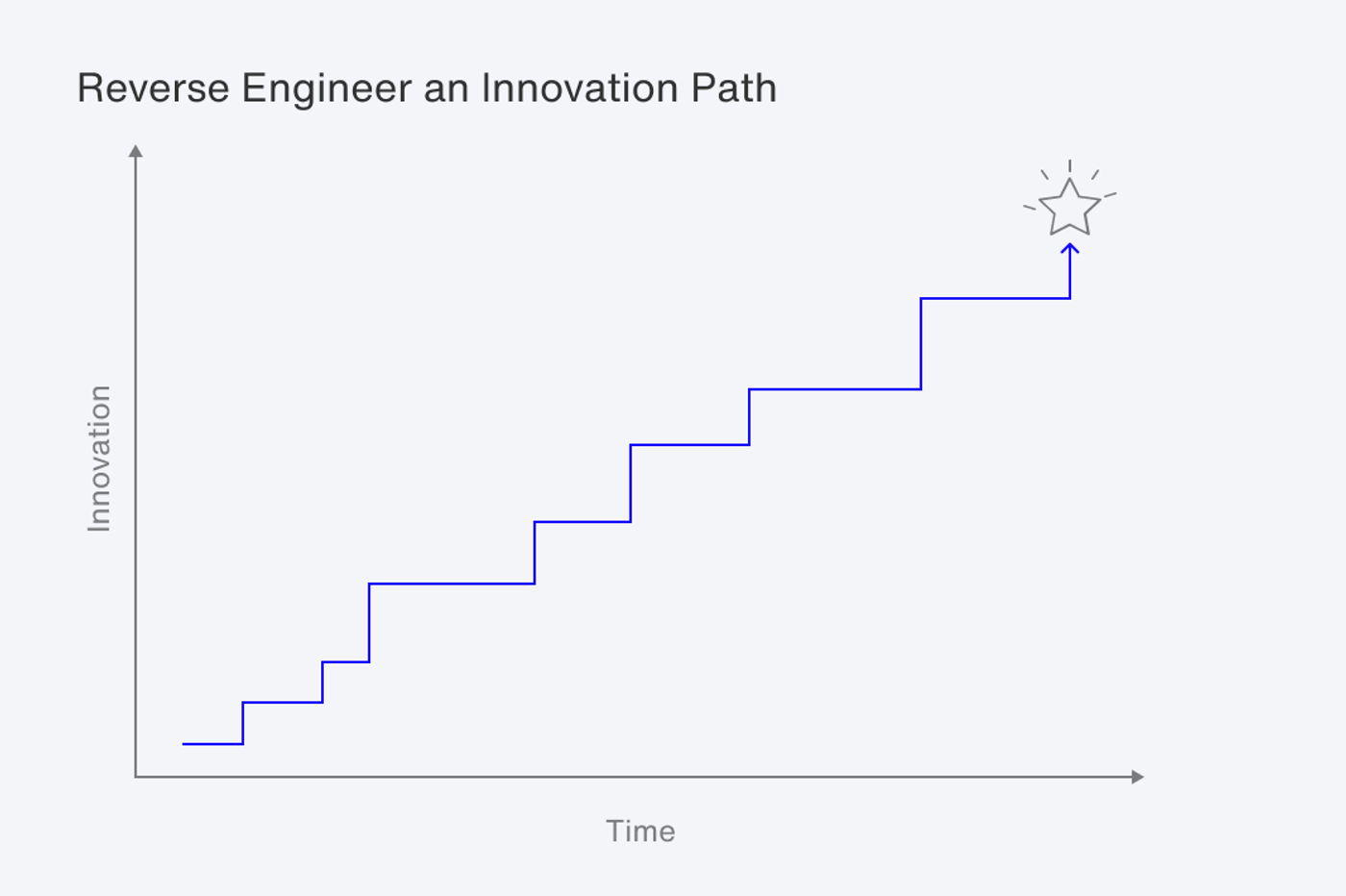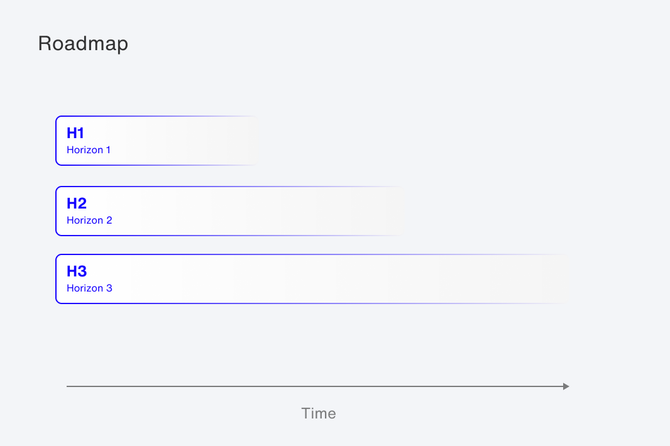
Peopledesign
The Built Environment
Furniture
Lighting
Textiles/Upholstery
Flooring/Carpet
Building Materials
AE Firms
Making Strategy Actionable
Making Strategy Actionable
Growth-oriented companies align their strategic focus with tactical plans.
Not connecting the dots between strategy and tactics is a common source of failure within many organizations. Strategies that don’t get implemented. Tactics that don’t add up. A lack of traction can happen for many reasons, but it’s common to have organizational misalignment and a misunderstanding of what strategy is versus other kinds of critical work.

The word “strategy” is used in many ways, but too often, it is misused to suggest a kind of importance or emphasis rather than a different kind of thinking. We might like to make the lunch committee sound more critical by calling it the strategic lunch committee, but it’s likely no more strategic. Strategic thinking is different than tactical thinking, but each is important.
A clear strategic focus enables better alignment of tactical plans. It starts with addressing the right questions.
Strategic Decisions
Roger Martin’s thinking on strategy is informative in many ways, but his “A Plan is Not a Strategy,” published a few years ago, is a particularly helpful anchor. In this piece, Martin clarifies that a plan is not a strategy but a set of distinct activities. Like the lunch committee, combining “strategic planning” adds further confusion.
A plan is something you’ve decided to do. You are your own customer as you decide how to spend resources and manage costs. You may launch a new product, open a showroom, or hire new people. These activities can get complex but are comfortable because you control all the variables. Planning is critical to any organization, but focusing on planning alone guarantees losing in the marketplace over time.
Conversely, a strategy is an integrated set of choices based on a theory about how to win the future. You are not in control because your customers are deciding, not you. You have to make decisions based on a hypothesis about what might need to happen to encourage your customers to like your offer more than that of your competitors. Strategic work comes with some angst because you don’t have all the answers and can’t prove it in advance. That’s the essential difference between management and leadership.
A strategy boils down to answering Where to Play and How to Win. Many built environment companies struggle with strategic focus, making the tough choices to move beyond planning and envision a future state.

Keep it simple. Push through the complexity of these choices and aim to get your strategy on a single page that isn’t simply reductionist but boldly states how you aim to win.
Breaking down big strategic questions into smaller decisions helps you move forward. Positioning is a key element of strategy, which includes five key topics: Market, audience, brand, claim, and support of your claim. Where to play (market, audience) and how to win (claim, support of the claim) determine whether your customers will choose you (brand perception).
Where to Play can mean focusing on a market segment, shifting from B2B to B2C, or targeting behavioral buying tendencies like leading with technology or sustainability. How to Win means defining how you aim to be different and better than marketplace alternatives in more precise terms – a differentiated, meaningful brand promise backed up by a customer experience that supports your claim.
Answering strategic questions enables other work, from envisioning a future state to backcasting. Greater specificity helps build momentum. We encourage our customers to invest in prototyping scenarios beyond today.
How far can this go?
How different is the marketplace?
What could our company look like in 5-10 years?
How will we use technology?
What does our brand mean to future customers?
Positioning Guide
Free Download
Learn about the five key positioning questions and how to answer them.
Backcasting
A clear understanding of a desired future state helps pivot the work from strategic thinking to tactical planning. Backcasting is an effective method of reverse engineering a hypothetical future to inform your work plan. Rather than extrapolating from current trends, organizing work based on your future will pull you closer to your goal and increase your likelihood of achieving it.

Your innovation path isn’t a straight line and will require both innovation and optimization phases. Innovation phases involve big, bold steps planned in advance, not merely reacting to near-term market dynamics. Optimization phases involve perfecting the current state while planning the next innovation.


What new capabilities and management systems will need to be developed to achieve your future goals? You are unlikely to achieve your future state in a single bound, so working through a backcasting process will help identify critical stepping stones.
- Vision: What is the future state where your business has achieved its goals?
- Success Factors: What must be true for the vision to become a reality?
- Current State: Where are we today compared with the vision?
- Milestones: What must have happened just before this future state?
- Initiatives: What specific actions are required to achieve each milestone?
- Constraints: What are the potential barriers, risks, and contingency plans?
- Implementation: How might we monitor and adapt?
Horizon Planning
Once Backcasting is complete, Horizon Planning, devised by McKinsey, is a helpful approach that can be overlaid with a backcasting model. Future work horizons provide a template for today, tomorrow, and the future.

In terms of investment, McKinsey’s “70/20/10 rule” suggests that 70 percent of innovation efforts should be focused on defending your core business, 20 percent on nurturing emerging businesses, and 10 percent on creating genuinely new businesses.
Planning in Strategic Horizons
H1
Defend the Core Business
Horizon 1 Investment: 70%
Maintain and optimize the core business, maximizing existing revenue streams and defending market share. How might you navigate current realities?
Competitors
Price pressure
RTO vs WFH
Tariffs
H2
Nurture Emerging Business
Horizon 2 Investment: 20%
Explore emerging opportunities and growth areas, venturing beyond the core business into adjacent markets or new technologies. Emerging business might respond to near-term opportunities, but ideally, they should be strategically aligned with the long-term vision. What emerging business is a stepping stone toward the future goal?
Breakthrough products
Sustainability
Talent
H3
Create Genuinely New Business
Horizon 3 Investment: 10%
Transform and create long-term, disruptive innovations and future possibilities, potentially involving entirely new business models or industries. What seeds need to be planted today for tomorrow's breakout capabilities?
AI-driven business
Business model innovation
New markets
Horizons are phases of a business, not a single project. Each horizon comprises several initiatives with a strategic goal aligning with the long-term vision. At Peopledesign, we leverage these tools to create roadmaps – initiatives mapped to an 18-month calendar that aligns with the larger goal.

Tactical Planning and Management
Each initiative may have several projects, each of which requires management – budgets, timelines, and expected outcomes. Many managers are most comfortable with tactical thinking and leveraging project management best practices.
- SMART (Specific, Measurable, Achievable, Relevant, Time-bound) objectives.
- Team Leadership: Roles and responsibilities (RACI matrix), motivation, communication, collaboration, stakeholder engagement, risk management, change management
- Detailed project plan: Scope, milestones, deliverables, dependencies, timelines, budget and resource allocation.
- Monitoring, time management, scheduling, and quality control.
- Project close and evaluation.
While these management methods are not new and vital for any organization to progress, tactical thinking differs greatly from strategic thinking. SMART objectives work well when managing resources but do not answer questions like Where to Play and How to Win.
The Infinite Game
All models are imperfect, but good ones used appropriately offer a lens for leadership and management. A future hypothesis can look good on paper, but tactics are when the rubber meets the road. Much can and should be learned from what works and, more importantly, what’s not working.
Clear objectives should guide work downstream. Your positioning and product portfolio will impact how your brand is expressed, manifested in a customer experience, and taken to market. It is also true that customer feedback loops and other metrics offer insights that work the other way.

A great plan will not lead to innovation. Critical choices should drive the work, with a vision toward the future, but strategy is never done. Like a scientific method, a hypothesis about the future must be tested, revisited, and refined. Your one-page definition of Where to Play and How to Win will change over time, affecting all other plans.
Innovative companies will understand different kinds of work to encourage momentum with less drag. Organizational alignment is how strategies get traction and resources are best leveraged. We don’t know the future, but having a clear strategic focus increases the likelihood that all other activities will align to help you grow.